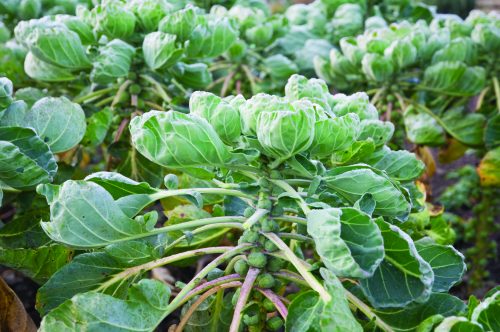
Knowing what climatic variations to expect is helpful info for your edible garden’s success.
Climates vary across New Zealand: for example, Kaitaia’s daily temperature averages between 11-18ºC, whereas Tekapo’s temperatures range between 1–11ºC*. These zonal differences, which happen in all countries, have been used to create ‘Plant Hardiness Zones’, developed originally by the US Department of Agriculture and since expanded by national meteorology agencies for their own countries. These country maps show minimum temperature zones. Although broad, this information gives helpful info so gardeners know what plants grow where and when is best to plant them.
Minimum air temperatures, however, are only part of the story. Hours of sunshine, ground temperature, moisture and wind and soil quality also influence plant growth. And luck’s involved, too — particularly relevant with seemingly increasing erratic weather patterns.
So, for those living in central Otago and South Canterbury, May is the month of picking the last of the leeks and salads and the first of the Brussels sprouts, then cleaning up and putting the garden to sleep. Gardeners of Auckland northwards will be sowing carrots, radish, silver beet, salad leaves, cabbages, spinach and rhubarb.
For the rest of the country free from snow blizzards and frosts, we could be planting radish, broad beans and spinach seeds, along with seedlings of winter lettuce, silver beet, cabbage, broccoli and Brussels sprouts.
Or, for an effortless way to improve soil over autumn and winter, scatter and rake in seeds of yellow mustard, lupins, winter oats or phacelia as a green crop. Let this struggle through the winter then chop it into the soil with a spade in spring before flowering. This gives good compost and plenty of nitrogen for spring crops.
Providing rains don’t cause rotting, May marks the end of autumn cropping. Harvest the last of capsicums, runner beans, celery, leeks, spring broccoli, sunflowers and snow peas. being harvested.
Gardening Q & A
Q: “I struggle to keep my garden going in winter. What should I grow?”
Michelle, Christchurch
A: The key to keeping your garden growing through winter is to prepare garden beds early. Summer crops tend to take a lot of nutrients from the soil as growth rates are high due to the favourable seasonal weather. Crops grown in warmer months are often leafy and produce an abundance of fruit and or flowers.
Early removal of old tired crops and diseased plant material is essential for a clean start for winter crops. An application of nutrient-enriched compost and sheep pellets are required to replenish the soil’s structure and increase the level of organic nutrients and microbes (tiny organisms). Be sure to dig these both in thoroughly and mix well with existing soil.
You can also consider growing some green crops such as lupin and mustard. Broad beans are also great at putting nitrogen back into the soil. Once the green crop is dying off and leaves are turning brown, dig it well into the soil rather than disposing of it in the compost bin. And don’t forget to add a suitable garden mulch. Mulching ensures that the soil’s temperature is more consistent and helps avoid nutrients leaching in heavy downpours. During winter apply nutrients little and often!
Good winter crops are all the brassicas such as cauliflower, broccoli and cabbage, but don’t forget leeks, carrots and spinach, too.
www.healthyfood.com










